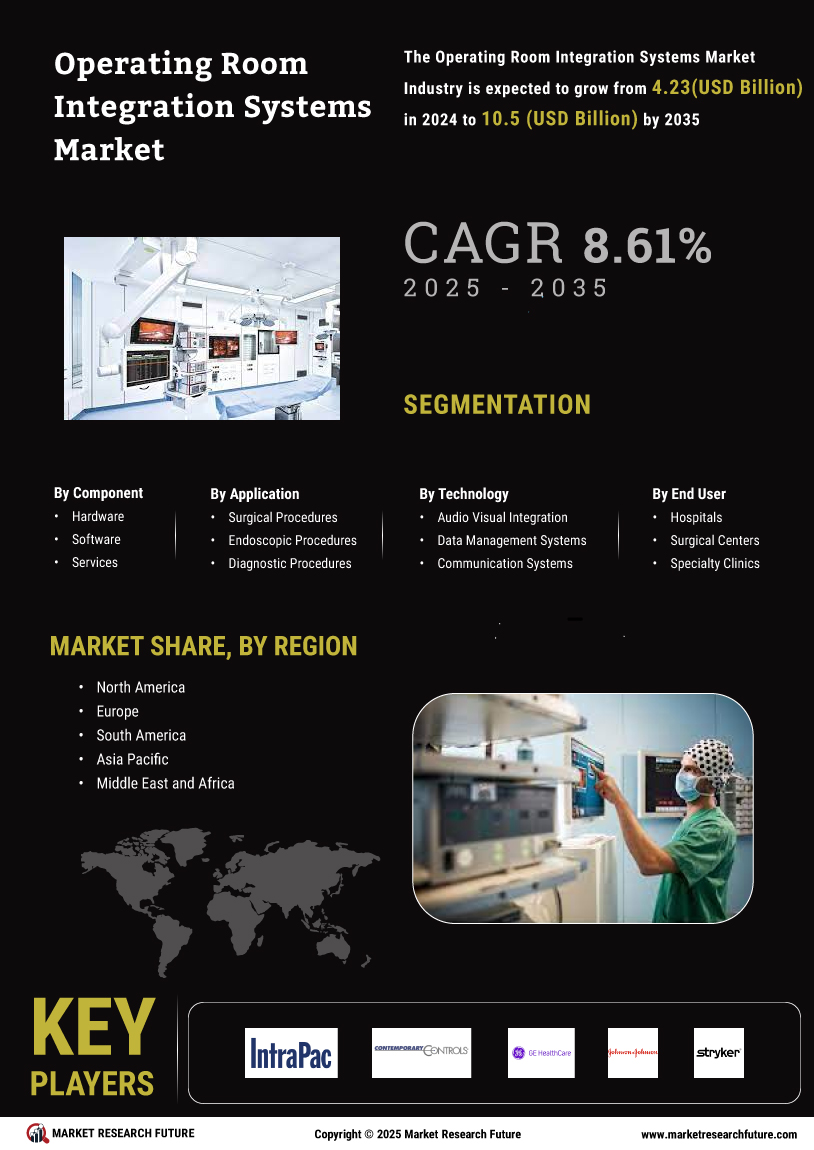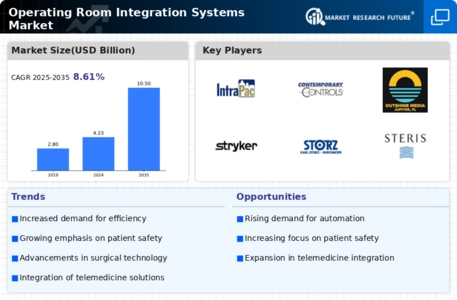Regulatory Support and Standards
The Operating Room Integration Systems Market is benefiting from increased regulatory support and the establishment of standards that promote the adoption of integrated systems. Regulatory bodies are recognizing the potential of these systems to improve surgical safety and efficiency, leading to the development of guidelines that encourage their implementation. This regulatory environment is fostering innovation and investment in the market, as manufacturers strive to meet compliance requirements. Furthermore, the establishment of standards for interoperability among devices is likely to enhance the functionality of integrated systems, making them more appealing to healthcare providers. As a result, the market is poised for growth as stakeholders align with these evolving regulations.
Emphasis on Enhanced Surgical Outcomes
In the Operating Room Integration Systems Market, there is a pronounced emphasis on enhancing surgical outcomes. Healthcare providers are increasingly recognizing the importance of integrated systems that provide comprehensive data and analytics during surgical procedures. This focus on improved outcomes is driven by the need to reduce complications and enhance recovery times for patients. Market data indicates that facilities utilizing integrated operating room systems report lower rates of surgical errors and improved patient satisfaction scores. As a result, the demand for these systems is expected to rise, as hospitals seek to implement solutions that not only improve efficiency but also prioritize patient safety and satisfaction.
Cost Efficiency and Resource Optimization
In the Operating Room Integration Systems Market, the drive for cost efficiency and resource optimization is becoming increasingly critical. Healthcare facilities are under pressure to reduce operational costs while maintaining high standards of care. Integrated operating room systems offer solutions that streamline workflows, reduce equipment redundancy, and optimize the use of surgical resources. Market data suggests that hospitals implementing these systems can achieve significant cost savings, with some reporting reductions in operating room turnover times. As healthcare providers seek to enhance their financial performance, the demand for integrated systems that deliver both operational efficiency and improved patient care is likely to rise, shaping the future of the market.
Growing Demand for Minimally Invasive Procedures
The Operating Room Integration Systems Market is witnessing a growing demand for minimally invasive surgical procedures. These procedures are favored for their potential to reduce recovery times and minimize patient discomfort. Integrated operating room systems play a crucial role in facilitating these types of surgeries by providing real-time data and enabling precise control over surgical instruments. Market analysis suggests that the increasing preference for minimally invasive techniques is driving the adoption of integrated systems, as they enhance the capabilities of surgical teams. This trend is likely to continue, with projections indicating a steady increase in the number of minimally invasive surgeries performed, further propelling the market forward.
Technological Advancements in Operating Room Integration Systems
The Operating Room Integration Systems Market is experiencing a surge in technological advancements that enhance surgical procedures. Innovations such as advanced imaging systems, robotic-assisted surgeries, and real-time data analytics are becoming increasingly prevalent. These technologies facilitate seamless communication between various surgical devices and systems, thereby improving operational efficiency. According to recent data, the integration of these technologies is projected to increase the market size significantly, with estimates suggesting a compound annual growth rate of over 10% in the coming years. As hospitals and surgical centers adopt these advanced systems, the demand for integrated solutions that streamline workflows and enhance patient outcomes is likely to grow.


















Leave a Comment